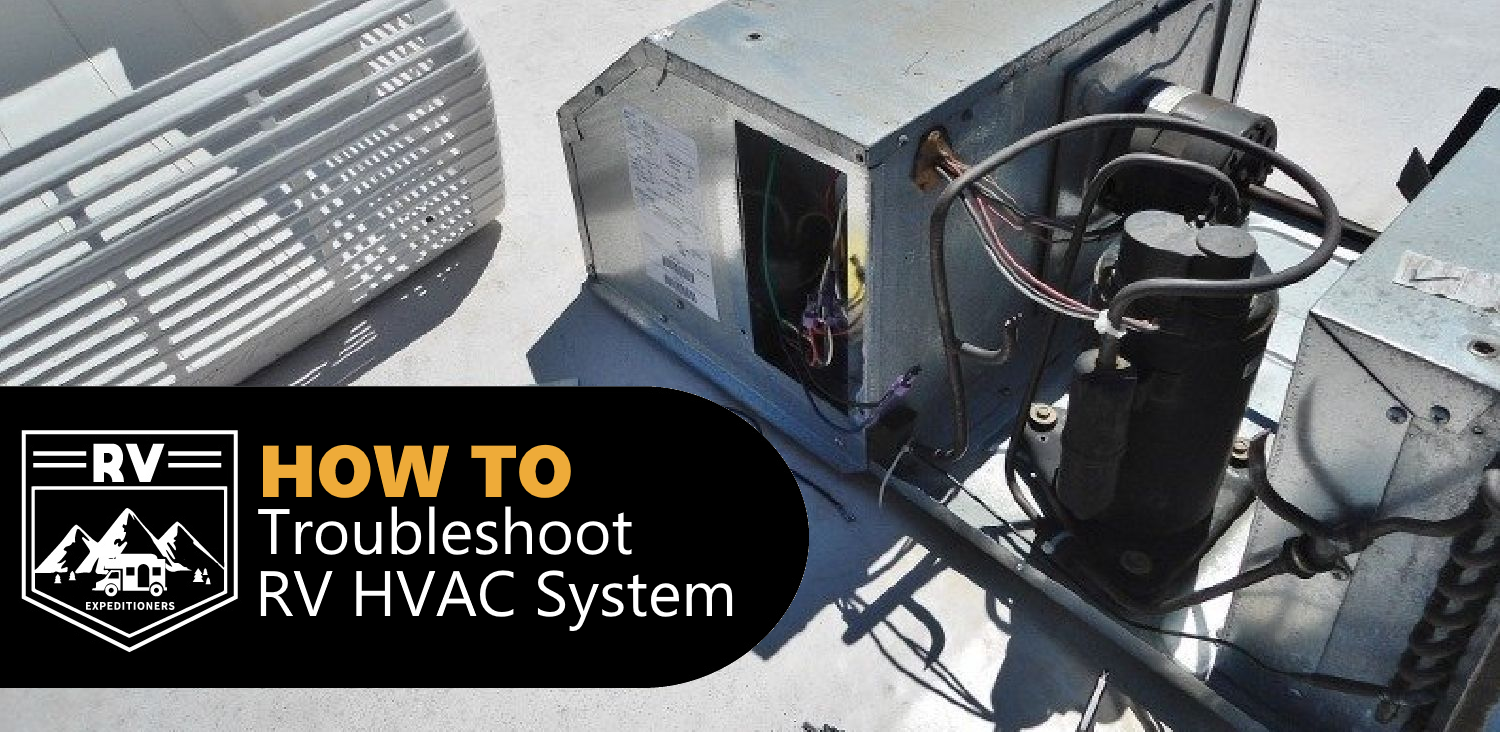You flip on your RV air conditioner... and nothing.
Or maybe your furnace fan starts, but the heat never kicks in.
If your HVAC system is acting up, there’s a good chance the problem isn’t with the unit - it’s with your RV electrical system.
Unlike your home setup, RV HVAC relies on a mix of 12V DC, 120V AC, and sometimes propane to function. And when even one part of the system isn’t getting the power it needs? You’re either sweating bullets or bundling up in layers.
In this guide, we’ll walk you through the electrical side of your RV HVAC system - how it works, how to troubleshoot it, and how to prevent future issues.
Whether you’re plugged into shore power or boondocking off-grid, this is the power knowledge you need to stay cool (or warm).

RV ELECTRICAL FOR HVAC
How RV Electrical Powers HVAC Systems
Let’s break it down. Your RV HVAC system pulls electricity from different sources depending on whether you're heating or cooling:
Air Conditioner (AC Unit)
- Powered by: 120V AC (shore power or generator)
- Needs: A steady, high-current source—typically on its own breaker
- Won’t run on: Standard 12V batteries or solar alone (without a hefty inverter)
Furnace (Propane with 12V Controls)
- Powered by: Propane for heat + 12V DC for the fan and ignition system
- Needs: A working 12V battery system to power the control board and blower fan
- Won’t run on: Propane alone—if your battery is dead, the furnace won’t start
Heat Pumps (if equipped)
- Powered by: 120V AC
- Needs: Similar power to a standard air conditioner; used for mild heating
Thermostat
- Powered by: Usually 12V DC
- Needs: Constant 12V to send signals to furnace or AC
- Common problem: If the thermostat display is blank, check your battery or fuses
RV Electrical for hVAC
Common HVAC-Related Electrical Problems
Here’s a cheat sheet of electrical issues that commonly mess with RV heating and cooling - and what you can do to fix them.
AC Unit Won’t Start
Likely causes:
- You're not connected to 30A or 50A shore power
- Tripped circuit breaker or GFCI outlet
- Faulty start capacitor or control board
Fix:
- Check your power source, then inspect the breaker panel
- Reset GFCI outlets (often in the bathroom or kitchen)
- Have a tech test capacitors or relay switches if needed
Furnace Fan Turns On, But No Heat
Likely causes:
- Low battery voltage (under 10.5V)
- Blown fuse on the furnace circuit
- Dirty sail switch or bad igniter
Fix:
- Charge batteries or connect to shore power
- Replace the fuse (typically 5-15 amps)
- Clean or replace sail switch or contact a pro
Thermostat Isn’t Working
Likely causes:
- Dead batteries (if battery-powered)
- Loose or corroded wiring
- Faulty thermostat
Fix:
- Swap batteries (if applicable) or test wiring connections
- Replace with a compatible RV thermostat if it’s unresponsive
AC Trips Breaker Constantly
Likely causes:
- Undersized shore power connection
- Dirty or frozen evaporator coils
- Bad compressor or wiring short
Fix:
- Upgrade to proper power source
- Clean coils, ensure good airflow, and have a tech check the compressor

RV Electrical for hVAC
Tools You’ll Want Handy
Want to troubleshoot with confidence?
Here’s what should be in your RV toolbox:
- Multimeter: To check voltage, test fuses, and confirm continuity in wiring
- 12V test light: Handy for quick checks on fuses and connections
- Spare fuses (ATC style): Your HVAC system likely runs on 5A–15A blade fuses
- Non-contact voltage tester: Great for verifying if AC power is live at outlets or breakers
- Battery monitor or voltmeter: To ensure your battery isn’t dropping too low under load
RV Electrical for hVAC
Preventive Maintenance for Electrical + HVAC
Want fewer headaches? These simple habits help prevent HVAC power issues before they start:
Test HVAC systems monthly, even in off-season - keeps components functional and exposes problems early
Inspect the breaker panel and fuse box regularly for signs of heat, corrosion, or loose connections
Label your fuses and breakers so you know exactly what controls what
Check your power cord and surge protector for damage or melting - especially after high-heat usage like AC in summer
Keep your batteries topped off, especially before long boondocking trips or cold-weather camping

RV Electrical for hVAC
When to Call a Pro
Time to bring in a certified RV tech if you experience any of these:
- Smell of burning plastic or electrical fire
- Furnace or AC won’t start at all (even after checking fuses and power)
- Frequent tripping of breakers or blown fuses with no clear cause
- Electrical arcing or melted wires
- Voltage drops below 11V even when plugged in
RV Electrical for hVAC
Final Thoughts: Stay Powered, Stay Comfortable
Your RV HVAC system is only as reliable as the power behind it.
Knowing how your electrical system connects to your heating and cooling is key to keeping things running smoothly - whether you’re tucked into a snowy mountain site or chasing the sun in Arizona.
So keep those batteries healthy, your breakers labeled, and your fans spinning. A well-maintained electrical system means more time relaxing and less time diagnosing weird noises in the middle of the night.
TOP of RV Electrical for HVAC Guide
BACK to HVAC Maintenance Guide
HOME to RVExpeditioners

